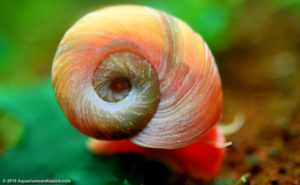19
Jul
Pesticide Caused Disruption of Ecological Balance Increases Parasitic Disease`
(Beyond Pesticides, July 19, 2017) Research connects a healthy environment to overall public health, linking diseases to pesticide caused disruption of ecological balance. A new study, published by University of  South Florida scientist Jason Rohr, PhD and colleagues, finds that the use of agricultural chemicals, predominantly in developing countries, is associated with increases in transmission risk for schistosomiasis, a disease caused by infection from a parasitic flatworm that lives in freshwater snails. The findings point to the need for an increased focus on alternative pest management approaches that promote, rather than degrade natural ecological services.
South Florida scientist Jason Rohr, PhD and colleagues, finds that the use of agricultural chemicals, predominantly in developing countries, is associated with increases in transmission risk for schistosomiasis, a disease caused by infection from a parasitic flatworm that lives in freshwater snails. The findings point to the need for an increased focus on alternative pest management approaches that promote, rather than degrade natural ecological services.
Previous research published by Dr. Rohr and colleagues found that amphibians exposed to pesticides had higher rates of parasitic infection, and increased fertilizer use resulted in an increase in algae that snail parasite hosts feed on. For the current study, researchers investigated the human epidemiologic risks associated with common farm chemicals.
To investigate pesticide effects on the ecosystem, scientists used mesocosms, an experiment designed in a controlled outdoor environment that replicates natural conditions. Algae, parasite-carrying snails, and snail predators (crayfish and water bugs) were added to a series of 60 tanks set up by researchers. The ecological effects of introducing chemical fertilizer, the herbicide atrazine, and insecticide chlorpyrifos were tested in separate mesocosms.
Results show that each agricultural input resulted in its own unique, ecologically disruptive effect. Increased fertilizer into the system showed similar results in previous research, with extra nutrients into the system causing a subsequent increase in all types of algae, including both species that become suspended in the water column and those that attach to smooth surfaces. Introducing atrazine in the system killed much of the suspended algae, however, this permitted increased light penetration to attached algae, the parasite carrying snail’s primary food source. Use of chlorpyrifos resulted in the death and decline of crayfish and water bug predators, which then allowed for an increase in snail populations.
Taking these data, Dr. Rohr and his team plugged their information into epidemiologic models used to assess parasite disease transmission risk in western Africa. While atrazine and fertilizer resulted in a 28% increased risk of transmission as a result of higher snail populations, chlorpyrifos’ effect on snail predators represented the greatest effect. Declines in crayfish and water bug populations increased the risk of human schistosomiasis infection 10-fold, underlining the importance of natural predators in reducing disease risk in vulnerable ecosystems. Indeed, in one test, mesocosm without any outside inputs resulted in increased predator populations that brought transmission risks below minimum thresholds.
This research has important implications for understanding the interaction between food production practices, environmental effects and public health. This study adds to growing evidence that the introduction of outside chemical inputs, like fertilizers and pesticides, result in unexpected trophic (food web) effects. Research published in 2015 by Margaret Douglas, PhD and John Tooker, PhD of Penn State University found that the use of neonicotinoid insecticides undermined overall crop protection efforts in a similar manner. While neonicotinoids are applied in attempts to combat slugs that feed on seedlings, scientists discovered that the insecticides were not affecting the slugs, yet the chemical was bioaccumulating in their bodies. However, ground beetles, the slug’s major insect predator, were actually found to decline in agricultural fields as a consequence of eating the insecticide-contaminated slugs. This process resulted in massive slug outbreaks, perpetuating additional pesticide use to control their population.
Chemical-intensive agricultural production models are highly dependent on chemical fertilizer and pesticide inputs. However, under the U.S. Environmental Protection Agency, testing of these chemicals focuses primarily on their direct effects on humans, wildlife, or water quality. Indirect effects that take into account the complex interactions that occur in real-world ecological models are generally not prioritized. This results in technical research and innovation that moves in the wrong direction, according to independent scientists. Money is spent on new chemical formulations, application methods, and genetically engineered crops that can withstand these products.
A comprehensive approach acknowledges ecological complexity, fosters biodiversity, and promotes non- and least-toxic pest management approaches that eliminate the need for outside inputs. These practices are regularly employed as part of organic agricultural production, which represents the safest way forward for food production that consumers can support. Protect complex ecological interactions and the broader food web by purchasing organic whenever possible. The authors of the current research indicate that as a result of predictions of increased agricultural activity in areas where schistosomiasis is present, the disease is likely to continue to increase in developing countries. By supporting organic agriculture, you can help put pressure on both domestic and foreign markets to move away from the regular use of toxic chemicals.
All unattributed positions and opinions in this piece are those of Beyond Pesticides.
Source: Science










